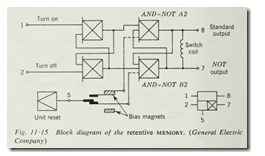Hi,
I am trying to identify a solid state device that will retain it's state when not powered. For example, I know that flash memory stores it's state by means of a floating gate that is capacitively charged and isolated from the drain/source. Unfortunately, I need a single discrete solid state device that will do this while passing a fair amount of current (>1 amp). I have considered a solid state relay, but I can not find a design that can retain it's state like a mechanical latching relay when it looses power.
Does anyone possibly know of a single discrete device that has such a capability, or a small circuit that could somehow manage to do this? I simply cannot find a solution using solid state devices.
Thanks
I am trying to identify a solid state device that will retain it's state when not powered. For example, I know that flash memory stores it's state by means of a floating gate that is capacitively charged and isolated from the drain/source. Unfortunately, I need a single discrete solid state device that will do this while passing a fair amount of current (>1 amp). I have considered a solid state relay, but I can not find a design that can retain it's state like a mechanical latching relay when it looses power.
Does anyone possibly know of a single discrete device that has such a capability, or a small circuit that could somehow manage to do this? I simply cannot find a solution using solid state devices.
Thanks

